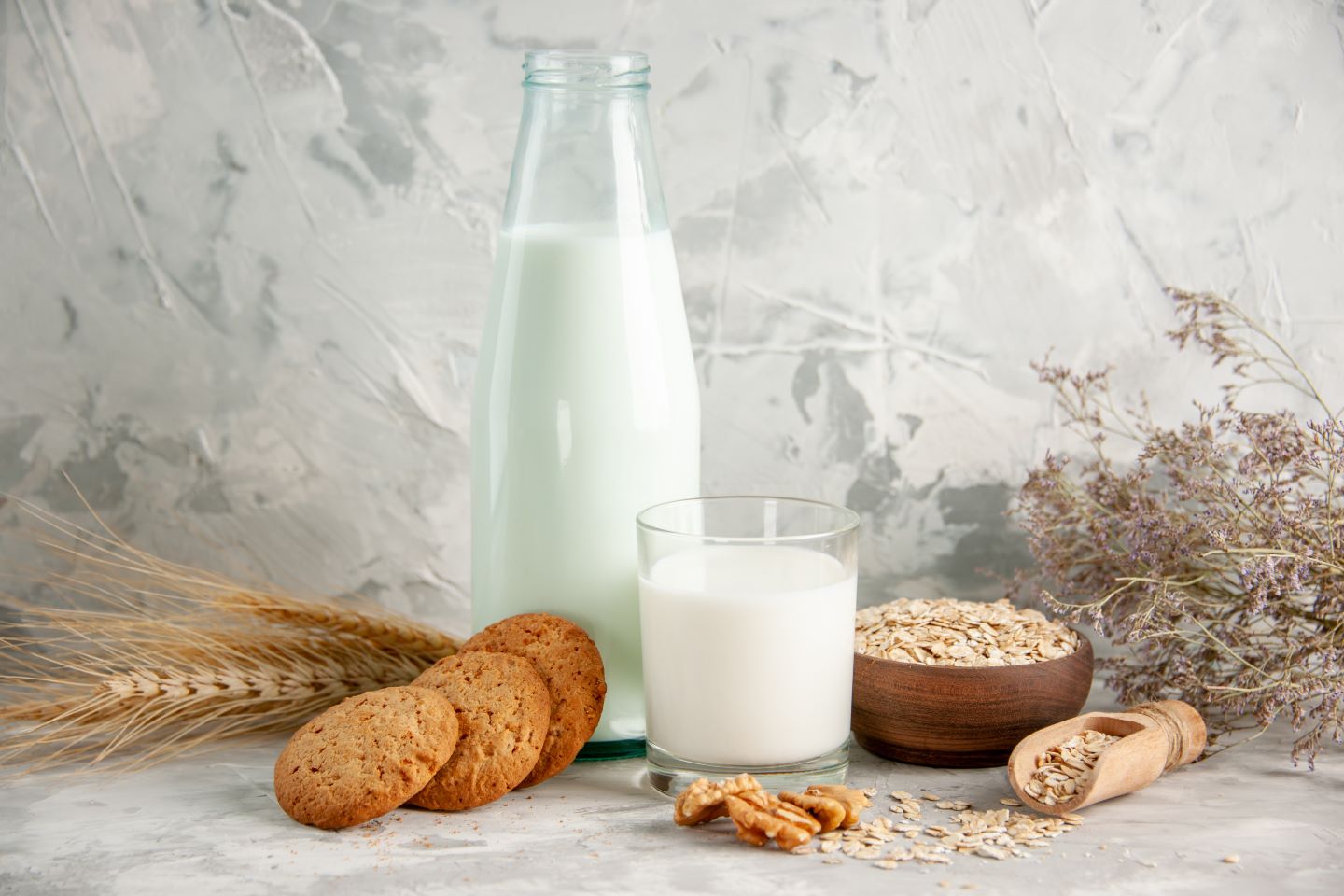Lactose Free Milk: A Nutritious Solution for Those Who are Lactose-intolerant

What is Lactose Free Milk?
The lactose free milk has the lactose removed or reduced and is therefore ideal for those who are lactose-intolerant. Lactose is a sugar present in all dairy products and milk, and lactose intolerance is an extremely common condition characterized by the body’s inability to digest the sugar because of a lack of the enzyme lactase. It is responsible for breaking down lactose in the digestive tract.
Understanding Lactose Intolerance
Knowing the underlying causes of lactose intolerance is essential to understand the importance of lactose free milk. Lactose, which is a disaccharide comprised of sugar molecules galactose and glucose, is usually broken into smaller intestines through an enzyme known as lactase. It is the enzyme responsible for breaking down lactose into its constituent sugars, which then get into the bloodstream and are used to generate energy.
In the case of lactose intolerance, the body produces or lacks inadequate amounts of lactase, making it difficult for the body to digest lactose efficiently. In the end, undigested lactose can travel to the large intestine, where it can interact with bacteria, causing discomforting gastrointestinal symptoms associated with the condition.
The Rise of Lactose Free Milk
The rising number of diagnoses of lactose intolerance has increased the demand for lactose-free dairy products. People with lactose intolerance typically have dietary restrictions, which can be difficult, considering milk products can be a popular source of vital nutrients, including calcium, vitamin D, and protein. Lactose free milk can address this problem by offering a feasible alternative that preserves the nutritional quality of regular milk but without the discomfort that comes with lactose.
How is Lactose Free Milk Made?
The production of lactose free milk follows a simple process that removes or breaks down the lactose in regular milk. Here’s a quick outline of how it’s produced:
- Lactase Enzyme Addition: Manufacturers add lactase enzymes to the regular cow’s milk. The enzyme lactase plays a role in breaking down lactose into simpler sugar forms.
- Incubation Time: The milk can be incubated for a set period so that the lactase enzyme can break down the lactose into glucose and galactose. Lactose-intolerant people more easily digest these.
- Heating: It is heated until it stops the enzymatic reaction and ensures that all lactose is hydrolyzed.
- Filtering and Standardization: The milk is filtered to eliminate solid particles. The fat content can be altered to reach the desired percentage of fat.
- Packaging: The lactose-free milk has been packaged and is ready to be distributed.
The result is a lactose-free product that tastes like regular milk. However, it is less of a burden to digest for those who have lactose intolerance.
The Nutritional Benefits of Lactose-free Milk
Is lactose free milk healthy? The lactose-free dairy product offers a wide range of benefits, particularly for those who are lactose intolerant or have sensitivities to dairy. Here are some benefits of lactose-free milk:
- Digestive Comfort: The most important benefit of lactose free milk is that it’s simpler to digest by those with lactose intolerance. The condition is the inability to digest lactose, which is the sugar in regular milk. Lactose-free milk can be treated to reduce lactose to simple sugars (glucose and galactose), making it easier on the digestive tract and less likely to trigger discomforts like gastric bloating, indigestion, and diarrhea.
- Nutritive Value: Milk that is lactose-free retains the nutritional value of regular milk. It is a great source of essential nutrients, including calcium, vitamin D, protein, and many minerals and vitamins. These nutrients are essential for your bones, muscle function, and overall health.
- Bone Health: Lactose-free milk is high in calcium. It is vital to maintain strong and healthy bones. A healthy calcium intake is essential for all people but is crucial for adolescents, children, and adults of a certain age to avoid osteoporosis-related conditions.
- Lactose-free protein Milk: Lactose-free protein milk is a fantastic source of protein quality. Protein is essential for muscle development repair and the body’s general functioning. It aids satiation and is especially helpful for those who want to build or maintain muscle mass.
- Vitamin D: Many varieties of milk lactose free are enhanced with Vitamin D. This vitamin is crucial to absorbing calcium and plays an important part in maintaining the health of bones. A healthy vitamin D intake is essential for preventing diseases such as rickets in children and osteomalacia among adults.
- Multi-purpose: Lactose-free milk can be served in a range of recipes to replace regular milk without affecting the flavor or texture of the food. This makes it a great option for baking, cooking, or making tea or coffee.
- Dietary Inclusion: Lactose free milk enables those with lactose intolerance to indulge in dairy-based foods they otherwise would have to avoid. This includes dairy-based foods like yogurt, cereals, cheese, and ice cream, as lactos free milk can be used to prepare these meals.
- Convenience: Lactose-free milk is easily available at most supermarkets, which makes it an ideal option for people suffering from lactose intolerance. It removes the need for complex strategies to avoid lactose and enables those with lactose intolerance to have the right diet balance.
- Reduced Discomfort: By opting for milk without lactose those who suffer from lactose intolerance can avoid the discomfort and embarrassment caused by digestive symptoms often resulting from drinking regular dairy products or milk.
- Improved Quality of Life: Overall, the availability of lactose-free dairy products improves the quality of life of those who suffer from lactose intolerance. They can drink dairy-based drinks and food without negative effects, leading to greater diet diversity and pleasure.
Important Note: It’s crucial to know that lactose free milk isn’t suitable for those with dairy allergies because it contains milk proteins. For those suffering from dairy allergies, dairy-free alternatives, such as almond milk, soymilk, or coconut milk, would be the best. For those who specifically suffer from lactose intolerance, lactose-free milk can be a practical and healthy option.
Versatility in the Kitchen
It is extremely flexible in cooking. It is a great substitute for regular milk in various recipes without compromising flavor or texture. From soups and creamy sauces to coffee and baked goods dairy products, lactose-free milk can be an ideal substitute that permits those with lactose intolerance to relish a range of delicious dishes.

Best Lactose Free Milk
A “best” lactose-free milk may differ based on the individual’s preferences, needs for a diet, and taste preferences. There are a variety of options on the marketplace. However, selecting the top lactose-free dairy largely depends on what you’re seeking in terms of flavor, nutritional content, and compatibility with your diet requirements. Here are some lactose-free milk alternatives to think about:
- Lactose-Free Cow’s Food: Lactose free condensed milk (typically made from cow’s milk) is an easy choice for those wanting the flavor and nutritional benefits of regular cow’s dairy without lactose. It is available in various fat content (whole 2, 2%, skim, 1%) to accommodate different diet preferences.
- Almond Milk: Almond milk is a type of plant-based milk that is made of almonds and water. It is naturally lactose-free and has a mild, sweet, nutty taste. Almond milk is usually selected because of its low-calorie content. It is a fantastic supply of Vitamin E.
- Soymilk: Soy milk is made up of whole soybeans and water. It has a rich texture and is a great protein source, similar to cow’s dairy. Soymilk is typically added with vitamin D as well as calcium.
- Oat milk: Oat milk is made of Oats and water. It has a mild and slightly sweet taste and a creamy consistency. Oat milk is famous for being free of lactose and is frequently supplemented with calcium and vitamin D.
- Coconut Milk: Coconut milk combines the coconut’s flesh and water. It is characterized by its distinctive coconut taste and smooth texture. Coconut milk is lactose-free and provides a distinct taste to food recipes.
- Rice Milk: is a mixture of ground rice, water, and milled. The milk has a mild flavor and is lactose-free naturally. It can be less dense than alternative kinds of milk.
- Cashew Milk: The cashew milk is made of cashews blended with water. It has a rich texture and a mild, bitter, nutty flavor. Cashew milk is lactose-free and has a great supply of healthy fats.
- Hemp Milk: Hemp milk is derived by mixing hemp seeds with water. It has a mildly sweet taste and is a great source of omega-3 fats. Hemp milk is lactose-free and safe for those with nut allergies.
- Flax Milk: Flax milk is made of flax seeds and water. It has a mild, sweet taste and is usually supplemented using calcium and vitamin D. The flax seed milk is lactose-free and is a good source of omega-3 fats.
- Chocolate Milk: Chocolate milk that is lactose-free is an excellent and practical choice for those who appreciate chocolate milk’s sweet and rich taste but suffer from dairy or lactose intolerances. It offers the flavor of traditional chocolate milk but without the discomfort in digestion caused by consuming dairy products that contain lactose.
Important Note: When selecting lactose-free milk, consider factors such as flavor and nutritional content, as well as limitations on dietary intake (such as allergy) and how you will use it in your recipes. Some prefer a mix of milk options for different reasons, like using almond milk in coffee or Soymilk in cereal. In the end, most importantly, the “best” milk that’s lactose-free is one that meets your personal preferences and needs.
A Solution for Dairy Allergies
It’s important to know that lactose-free dairy is distinct from milk substitutes designed for people with allergies to dairy. The lactose-free milk still comes from cow’s milk, and it retains the protein content of regular milk. This means it might not suit people with dairy allergies since it may still cause allergic reactions. If you have a dairy allergy, alternative plant-based milk sources, like soy or almond milk, could be a better option.
Conclusion
Lactose-free milk has emerged as an essential nutrition component for lactose intolerance patients. It provides a simple option to take advantage of the advantages of dairy products, such as calcium proteins, vitamins, and amino acids, without the nagging effects of lactose intolerance. Due to its ability to be used in cooking and the numerous options, lactose-free milk has earned its spot in supermarket stores worldwide, offering millions of people an appealing and nutritious alternative to dairy milk.





